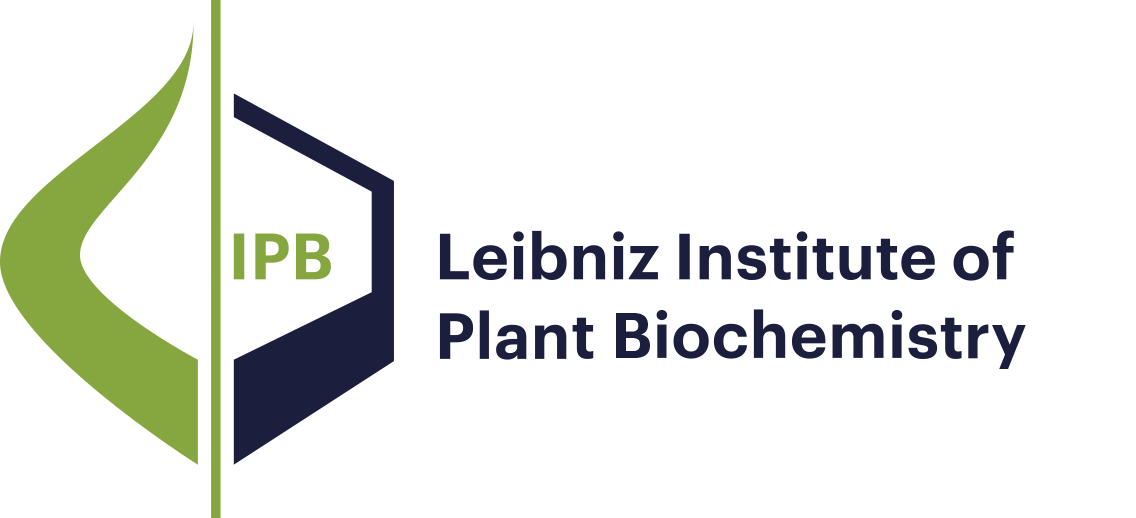- Results as:
- Print view
- Endnote (RIS)
- BibTeX
- Table: CSV | HTML
Publications
Publications
Publications
Publications
Publications
Books and chapters
Research Mission and Profile
Molecular Signal Processing
Bioorganic Chemistry
Biochemistry of Plant Interactions
Cell and Metabolic Biology
Independent Junior Research Groups
Program Center MetaCom
Publications
Good Scientific Practice
Research Funding
Networks and Collaborative Projects
Symposia and Colloquia
Alumni Research Groups
Publications
Transgenic Arabidopsis conditionally expressing the bacterial avrRpm1 type III effector under the control of a dexamethasone‐responsive promoter were used for proteomics studies. This model system permits study of an individual effector without interference from additional bacterial components. Coupling of different prefractionation approaches to high resolution 2‐DE facilitated the discovery of low abundance proteins – enabling the identification of proteins that have escaped detection in similar experiments. A total of 34 differentially regulated protein spots were identified. Four of these (a remorin, a protein phosphatase 2C (PP2C), an RNA‐binding protein, and a C2‐domain‐containing protein) are potentially early signaling components in the interaction between AvrRpm1 and the cognate disease resistance gene product, resistance to Pseudomonas syringae pv. maculicola 1 (RPM1). For the remorin and RNA‐binding protein, involvement of PTM and post‐transcriptional regulation are implicated, respectively.
Publications
Calcium (Ca2+), as a second messenger, is crucial for signal transduction processes during many biotic interactions. We demonstrate that cellular [Ca2+] elevations are early events in the interaction between the plant growth‐promoting fungus Piriformospora indica and Arabidopsis thaliana . A cell wall extract (CWE) from the fungus promotes the growth of wild‐type seedlings but not of seedlings from P. indica ‐insensitive mutants. The extract and the fungus also induce a similar set of genes in Arabidopsis roots, among them genes with Ca2+ signalling‐related functions. The CWE induces a transient cytosolic Ca2+ ([Ca2+]cyt) elevation in the roots of Arabidopsis and tobacco (Nicotiana tabacum ) plants, as well as in BY‐2 suspension cultures expressing the Ca2+ bioluminescent indicator aequorin. Nuclear Ca2+ transients were also observed in tobacco BY‐2 cells. The Ca2+ response was more pronounced in roots than in shoots and involved Ca2+ uptake from the extracellular space as revealed by inhibitor studies. Inhibition of the Ca2+ response by staurosporine and the refractory nature of the Ca2+ elevation suggest that a receptor may be involved. The CWE does not stimulate H2O2 production and the activation of defence gene expression, although it led to phosphorylation of mitogen‐activated protein kinases (MAPKs) in a Ca2+‐dependent manner. The involvement of MAPK6 in the mutualistic interaction was shown for an mpk6 line, which did not respond to P. indica . Thus, Ca2+ is likely to be an early signalling component in the mutualistic interaction between P. indica and Arabidopsis or tobacco.
Publications
In Arabidopsis thaliana, mitogen activated protein kinase (MAPK) signaling cascades that contain MPK3, MPK4 and MPK6 have been implicated in various aspects of developmental processes and stress responses. We identified an ethylene response factor (ERF104), which controls innate immunity, to be a specific substrate of MPK6 and showed that ethylene signaling regulates the release of the ERF104 substrate from its kinase. Implications and questions that arise from our findings are addressed. To promote discussions, previously unpublished data, that are rather confounding, are presented and possible explanation provided on how these may fit into our current model.
Publications
Mitogen-activated protein kinase (MAPK)–mediated responses are in part regulated by the repertoire of MAPK substrates, which is still poorly elucidated in plants. Here, the in vivo enzyme–substrate interaction of the Arabidopsis thaliana MAP kinase, MPK6, with an ethylene response factor (ERF104) is shown by fluorescence resonance energy transfer. The interaction was rapidly lost in response to flagellin-derived flg22 peptide. This complex disruption requires not only MPK6 activity, which also affects ERF104 stability via phosphorylation, but also ethylene signaling. The latter points to a novel role of ethylene in substrate release, presumably allowing the liberated ERF104 to access target genes. Microarray data show enrichment of GCC motifs in the promoters of ERF104–up-regulated genes, many of which are stress related. ERF104 is a vital regulator of basal immunity, as altered expression in both erf104 and overexpressors led to more growth inhibition by flg22 and enhanced susceptibility to a non-adapted bacterial pathogen.
Publications
The HrpZ1 gene product from phytopathogenic Pseudomonas syringae is secreted in a type‐III secretion system‐dependent manner during plant infection. The ability of HrpZ1 to form ion‐conducting pores is proposed to contribute to bacterial effector delivery into host cells, or may facilitate the nutrition of bacteria in the apoplast. Furthermore, HrpZ1 is reminiscent of a pathogen‐associated molecular pattern (PAMP) that triggers immunity‐associated responses in a variety of plants. Here, we provide evidence that the ion pore formation and immune activation activities of HrpZ1 have different structure requirements. All HrpZ1 orthologous proteins tested possess pore formation activities, but some of these proteins fail to trigger plant defense‐associated responses. In addition, a C‐terminal fragment of HrpZ1 retains the ability to activate plant immunity, whereas ion pore formation requires intact HrpZ1. Random insertion mutagenesis of HrpZ1 further revealed the C terminus to be important for the PAMP activity of the protein. HrpZ1 binds to plant membranes with high affinity and specificity, suggesting that the activation of plant immunity‐associated responses by HrpZ1 is receptor‐mediated. Our data are consistent with dual roles of HrpZ1 as a virulence factor affecting host membrane integrity, and as a microbial pattern governing the activation of plant immunity during infection.
Books and chapters
The plant immune system can be activated by two different types of signals, by microbial signatures and by features signifying malfunctioning of plant processes.

